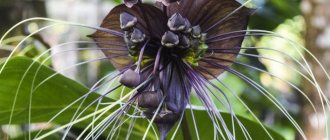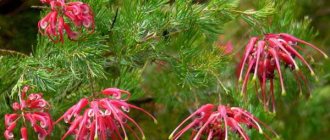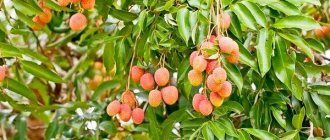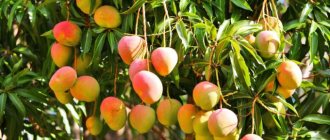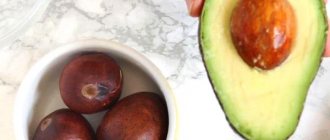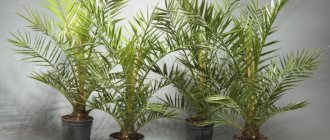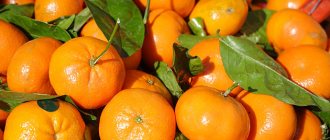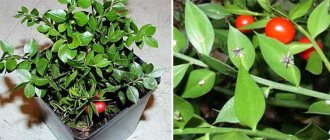Fig tree, ficus carica, fig are the names of the same plant. This is a fruit crop that produces tasty and healthy fruits with a dark purple shell. They are good fresh and in the form of dried fruits, as an addition to desserts, meat and fish dishes.
The Mediterranean is considered the birthplace of figs. In our country, the heat-loving plant is grown in open ground only in regions with a southern climate. But as a houseplant, the fig tree is cultivated throughout Russia. How to grow figs at home so that they bear fruit, read the article.
Is it possible to grow figs at home?
Growing figs at home is quite possible. Even in nature, a compact fig tree rarely grows higher than 2-2.5 m. In a pot, the plant reaches a height of no more than 1-1.5 m . It can also be made lower by shaping and pinching the growth point.
In order for the fig tree not only to grow in a pot on the windowsill as a green houseplant, but also to bear fruit, it is important to choose the right variety. Fig trees are divided into three types :
- requiring pollination;
- not requiring pollination (parthenocarpic);
- dispensing with spring pollination, but requiring autumn pollination (mixed).
For home cultivation, choose varieties that do not require pollination . Gardeners also recommend giving preference to low-growing options. They have a neat crown and are easy to shape.
The best varieties of figs for growing at home are considered:
- Solar;
- Sochi 7;
- Kadota;
- Purple Sukhumi.
Other varieties will also work, but if they require pollination, it will be extremely difficult to get the plant to bear fruit. Tall varieties of fig trees require frequent formation, are less hardy and more demanding in care.
Requirements for conditions of detention
When growing figs in an apartment, it is important to provide the plant with optimal conditions . Otherwise, it will begin to wither, get sick, dry out and eventually die.
Suitable growing conditions:
- Temperature . Figs are a heat-loving plant. The optimal temperature for its cultivation from the beginning of spring to the end of autumn is +25...+27°C. The fig tree also grows at room temperature – +20…+22°C. In winter, when the fig tree sheds its leaves, the temperature is reduced to +10°C. During winter dormancy, the tree can withstand cold temperatures down to 0°C.
- Humidity . Figs require high humidity. On average, indicators should reach 75-80%. Hot, dry air coming from heating appliances is dangerous for wood. The plant is not placed near heaters and radiators. If it is located indoors during the cold season, then air humidifiers are used.
- Lighting . The optimal length of daylight for figs during the growing season is 12 hours. However, lovers of exotic plants argue that it is not necessary to use additional lighting sources. It is enough to choose the right place for growing. Indoor figs do not tolerate direct rays of the scorching sun, so it is recommended to shade them from 12 to 16 hours.
In summer, the plant needs enough natural light .
It is placed near the south window, curtained with a translucent curtain, or on the eastern windowsill without additional protection from the sun. In the warm season, it is useful to take the plant in a pot into the garden or place it on the balcony .
Choose a place partially protected from the sun. In spring and autumn, the plant should be on a southern windowsill . It is not necessary to cover the window with tulle.
In winter, figs are taken to a cool room . This can be a glazed, frost-protected balcony or loggia, an unheated room or a window sill in the entrance (provided that the window is large and lets in a lot of light). It is advisable to place the plant near a southern windowsill.
Note! If at the beginning of spring or late autumn the plant stands on a window under which a heating device is operating, it will need protection from hot dry air. To do this, lay a damp cloth over the radiator, and make a side of insulating foil material on the edge of the window sill.
Culture transplantation
To plant figs in a pot you need:
- Mix all parts of the soil substrate and disinfect the soil.
- Lay expanded clay and cover it with prepared soil, and put a layer of clean river sand on top.
- Transfer the seedling from the container, compacting the soil a little.
- Carefully water the young plant.
- Place the pot in a bright place.
Figs planted from cuttings or layering will produce the first fruits for 2-3 years. Growing figs in an apartment is quite simple. With a little effort and proper care, the tree will delight you with tasty and healthy fruits.
Planting figs
Figs can be propagated in two ways: seeds and cuttings . Most gardeners use the second method. It takes little time, is easy to perform and gives a guaranteed result, because fig tree cuttings take root easily. The chance that a plant grown vegetatively will bear fruit is higher than that of figs grown from the seed.
Some lovers of exotic indoor plants are interested in the process of growing figs from scratch. In addition, it is not always possible to get cuttings. In this case, seeds collected from fruits are suitable. They have low germination capacity, and seedlings obtained from them grow slowly.
Growing figs from sprouts
Before planting a fig sprout, it is important to choose suitable planting material. A branch is cut from a fruit-bearing tree without traces of disease and pest damage.
Such a distance is removed from the upper edge so that 3-4 axillary buds remain on the future cutting. The cut is made smooth. 2 cm are removed from the lower bud and cut at an angle of 45°. If the branch is divided into several cuttings, then a distance of 1 cm is left from the top bud to the cut.
Any small container with holes in the bottom is suitable for rooting cuttings . Plastic cut-off bottles or disposable cups are often used. The container is sterilized with boiling water or a dark pink solution of potassium permanganate.
Ordinary universal soil will also work as a soil. Experienced gardeners recommend mixing it with sphagnum. The ground is also disinfected.
How to grow a seedling from a cutting at home in a pot:
- A layer of drainage is placed at the bottom of the container. The rest of the volume is filled with soil. The soil is moistened with warm water.
- The cuttings are soaked for 30 minutes in a light pink solution of potassium permanganate. Shallow notches are made on the bark of the lower part of the branch (up to the bud). The branch is placed in a root formation stimulator (Heteroauxin, Kornevin) for a day.
- The cutting is stuck into the ground up to the second bud. It is sprayed with water, covered with a bag or the top of a cut bottle and placed in a warm, well-lit place.
On average, the plant takes 2-4 weeks to root . The formation of leaves indicates that the fig has taken root.
Note! Some gardeners root cuttings in water and only then transplant them into the ground.
Before the cutting takes root, it is watered as the soil dries, ventilated for 15 minutes daily, and sprayed with warm water. After rooting, the duration of ventilation begins to increase, gradually accustoming the plant to room temperature. When the duration of ventilation reaches a day, the greenhouse is dismantled.
Propagation of figs by seeds
Fig seeds are obtained from fresh fruits purchased at the supermarket. They must be fully ripe, have a purple tint, and the correct shape. It is important that there are no stains, rot, holes or other signs of disease and pest infestation.
The ripe fruit is cut and the seeds are extracted from it . They are washed in warm water, clearing them of pulp. Then the seeds are dried for 24 hours.
Note! You should not store fig seeds for a long time. This reduces their germination rate. It is better to plant planting material immediately after collecting and carrying out preparatory procedures.
Sow fig tree seeds in a shallow communal container with drainage holes in the bottom. Before planting, containers are disinfected.
For seed germination, commercially available universal soil or a mixture of garden soil, low-lying peat and sand are suitable. The soil is disinfected with a dark pink solution of potassium permanganate.
Instructions for beginner gardeners on how to plant fig seeds :
- The container is filled with drainage and soil so that 3 cm is left free to the edge. The soil is moistened with warm water.
- Seeds are planted at a distance of 2 cm from each other. They are planted to a depth of 2-3 cm.
- The soil is moistened with warm water from a spray bottle. Cover the container with film and place in a warm place. Ventilate daily for 15 minutes, moisten the soil as it dries from a spray bottle.
After the shoots appear, the ventilation time is gradually increased and brought up to a day. Then the greenhouse is dismantled.
When 2-3 true leaves appear, the plants are dived into individual containers , choosing the strongest specimens. It is important that the volume of the pot is no more than 0.5 liters, and that there are drainage holes in the bottom of the containers. When transplanting, the root collar is not buried.
Interesting things on the site:
How to grow indoor pomegranate: care features
How to grow an apricot from a seed in a pot
Common Fig Tree Diseases
Like many plants, fig trees are susceptible to various misfortunes.
Viral mosaic
May affect the entire fig tree or just a few branches. Affected leaves appear riddled with small blisters as a result of insect bites. There are also large, bright, almost yellow spots interspersed with greener areas. Some leaves may even appear atrophied and pale green in color. In the most severe cases of infestation, fig tree growth is slowed and fruit production is greatly reduced.
How to react?
There is currently no way to eradicate fig mosaic. It is necessary to take care using preventive measures, in this case optimal cultivation conditions (soil without excess or lack of water, sun, available nutrients that will prevent the appearance of Aceria ficus.
Root rot
During the first warm days, some or all of the leaves turn yellow (depending on the degree of decay) and appear stretched for no apparent reason. In the most severe forms, the leaves and developing fruits turn brown and then dry out before falling off. In fact, the fig tree is slowly dying because its roots, completely smothered by the development of the fungus responsible for root rot, are unable to nourish the above-ground parts.
How to react?
If the tree is partially affected, the best remedy is to replant it: place the fig tree in perfectly drained soil to prevent excessive water accumulation in winter and spring. Also avoid applying too much fertilizer or manure, and avoid damaging it at its shallow roots or at the base of the trunk.
Rules for caring for figs
In order for the plant to develop properly and not get sick, it needs to be properly cared for.:
- Watering . The soil is moistened every other day. It is important to ensure that the soil does not dry out, but that moisture does not stagnate in it. Some gardeners use bottom watering, constantly adding water at room temperature to the tray under the pot. The procedure is carried out in the morning or evening, when the sun is inactive.
- Spraying . Figs are sprayed daily in the morning or evening with warm, settled water. This procedure not only helps maintain an optimal level of humidity, but also prevents the appearance of dust mites.
- Loosening . The soil is loosened at least once a week. This is necessary to destroy the earthen crust, which interferes with normal root air exchange and promotes stagnation of fluid in the roots.
- Feeding . They begin to apply in early spring, even before the buds swell. Use nitrogenous fertilizers. After the buds swell and leaves form, potassium-phosphorus and organic are alternated. Fertilizing is applied on average 1-2 times a month.
- Formation . When the plant reaches a height of 30 cm, pinch out the central trunk. At each level, 3-4 of the strongest skeletal branches are left, directed in different directions. All shoots growing inward are removed. The branches are shortened to form a neat crown.
- Sanitary pruning . The procedure is carried out annually in the fall. Remove dry, damaged and old branches.
- Transplant . When the roots fill the pot, the figs are transplanted into a new larger container. This is done through transshipment. The plant is removed from the pot along with a lump of earth. It is moved into a new container, and the missing volume is filled with soil. You cannot immediately plant the plant in a large container. It will form incorrectly and will not bear fruit.
Features of winter care
During wintering, caring for figs changes , because during this period the plant is dormant. When the plant sheds its leaves, it is placed in a colder room. Feeding is stopped. The frequency of watering is reduced to 3-4 times a month.
Flowering and fruiting
Figs grown from seed begin to bloom and bear fruit 2-3 years after planting . If the grower decides to propagate the plant using seeds, then he will receive the first harvest only in 4-5 years.
During fruiting, it is important to form the tree correctly. No more than 2-3 fruits are left on each branch. The rest are deleted.
often complain that although the fig tree bears fruit, it does not bloom . This is actually a feature of the fig tree. At home, its fruits can set on a tree without leaves.
If the fig does not bear fruit at all , most likely a variety that requires pollination was selected. To solve the problem, a branch of a fruiting fig is grafted onto the plant.
Protection from diseases and pests
At home, figs are affected by diseases and pests much less frequently than in the garden. However, some problems may arise when growing it :
- Spider mite . Small black or red insects that feed on the juices of the plant cause it to wilt. The pest can be detected by the cobwebs on the back of the leaves. The main cause of spider mite infestation is dry indoor air. To cope with the problem, the fig tree is washed in the shower and then sprayed with a soapy solution.
- Coral spotting . A fungal disease that appears as reddish spots on fig shoots. If a problem is detected, all affected parts are removed, and the plant is sprayed with a solution of copper sulfate.
Description of the plant
Figs in their natural habitat
The success of figs is due to its more than outstanding characteristics:
- high yield (up to 200 c/ha);
- harvesting two crops per year;
- ripe fruits contain a large amount of sugar (from 24 to 37%);
- high concentrations of useful substances in fruits - vitamins and microelements;
- universality of use of the culture (its delicious fruits are consumed raw and dried, jams, jams, juice and even bread are made from them);
- unpretentiousness of the plant - it can grow even on rocky soils and rocks;
- early fruiting and long life span - the plant begins to bear fruit in the third year of life and lives up to 60 years, with virtually no reduction in yield.
The beneficial properties of figs have been known for a long time. It has a beneficial effect on the cardiovascular system and improves metabolism. The sweet and healthy fruits of figs are also high in calories and can quickly satisfy hunger.
All this splendor of properties is offset by one drawback - figs are a heat-loving crop and in our area can be grown exclusively as a houseplant or greenhouse plant.
Despite their subtropical origin, there are also frost-resistant varieties of figs (for example, Brown Turkish), which can withstand frosts down to -20 degrees, but even they do not have time to ripen in our climate.
The article discusses how you can grow figs at home and how to care for the plant for its normal existence and abundant fruiting.
Fig or fig tree is a deciduous plant of the Mulberry family with light gray bark.
These exotic plants grow and bear fruit in climates that have sufficient days for the fruit to ripen.
The powerful stem (trunk) has a straight or slightly curved shape. Its height sometimes reaches 12 m (although there are also low-growing varieties, no more than 2 m high), and its thickness exceeds 50 cm. The skeletal branches of the plant are also thick and strong.
Its leaves have a five- or seven-lobed shape and long petioles. The size of the leaves can be quite large (up to 20 centimeters in diameter).
Dried figs are a real delicacy!
A special feature of figs is their pollination. During flowering, two types of inflorescences are formed in the leaf axils - figs and caprifigs, with female and male flowers, respectively. Moreover, both male and female flowers are located on the inner side of spherical oval formations with a hole at the top.
Most cultivated fig varieties have only female inflorescences (figs). In order for pollination to occur in gardens with cultivated fruit-bearing varieties, you need to plant 1-2 wild trees. Pollination is carried out by insects, namely blastophgi wasps. Getting from the male to the female inflorescence, they transfer pollen.
The fruit of a fig (fig, wineberry) is actually not a berry, but an infructescence consisting of many small flowers located inside the fruit shell
Despite the apparent complexity of the pollination process compared to other plants, figs have been “using” a similar scheme for more than 30 million years. Symbiosis with wasps is beneficial to both species - without figs, blastophages cannot reproduce.
Parthenocarpic (self-pollinating) varieties of figs have been artificially obtained that do not require such a complex pollination procedure to obtain fruit.
The root system of a plant can have different sizes. If the roots can provide the plant with enough nutrients, then they do not tend to grow.
Figs live quite a long time, up to 60 years. But there are specimens that are over 300 years old.
Other possible problems during cultivation and ways to solve them
Beginner gardeners face a number of problems when growing indoor figs :
- In winter, the leaves do not fall. Usually, figs are brought into a cool room after leaf fall. If the leaves have not fallen from the crown, the fig tree is taken to a cool room at the end of autumn. A change in temperature will trigger leaf fall.
- The leaves began to turn yellow and fall off. This happens if the plant is in a draft, it is watered with cold water, or the air in the room is too dry. To correct the situation, all negative factors are eliminated.
- The tree began to turn yellow and wither after being sent for the winter, moved to the garden or back to the house. This happens when there is a sudden change in temperature. To prevent this from happening, the plant is first hardened.
Fig tree varieties
The following varieties of Figs are suitable for growing: Crimean Black, Adriatic White, Brunswick, Dalmatian:
- Brunswick . It is the most frost-resistant variety and grows in frosts down to 29°C after insulation for the winter. It has greenish fruits and a purple blush on them. Fruit weight – up to 45 g.
- Dalmatian . Tolerates cold down to – 15°C. The fruits are greenish, pear-shaped and reach a weight of up to 90-180 g. They are distinguished by juicy and sweet pink pulp.
- White Adriatic. It is distinguished by small but juicy and sweet fruits, weighing up to 35-40 g, light green skin and pink flesh.
- Crimean Black or Moisson. The fruits, weighing up to 30-40 g, have a dark purple skin. The pulp is distinguished by its sweet and sour taste and the presence of a pronounced aroma.
Dalmatian Fig
In cool regions, the Turkish brown fig tree is more often grown, the reddish-brown fruits of which ripen in the third decade of August. In September, figs of the Date Neapolitan variety ripen; they have purple-red figs. Suitable partially self-fertile figs are the early Sabruzia Pink and the Crimean Black variety.
Turkish brown fig tree

